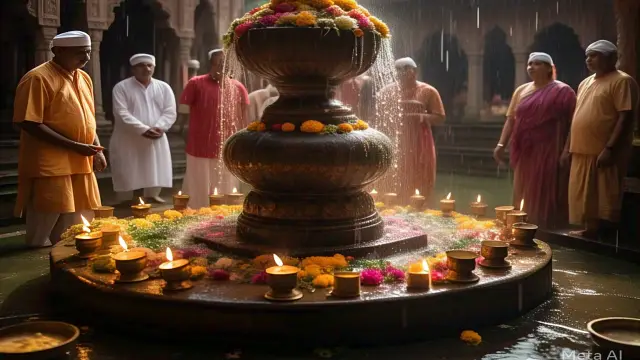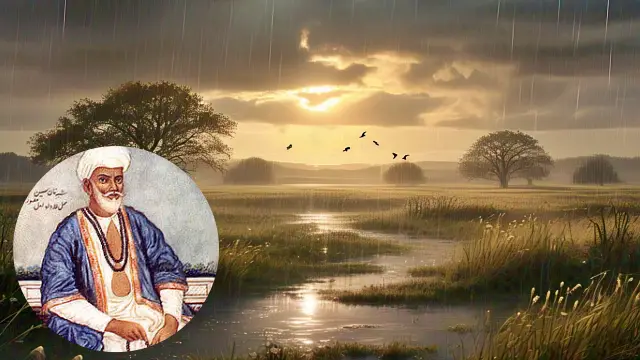The Legacy of Tansen: Music, Rain, and Rituals in India
Table of Contents
Tansen was one of the greatest musicians in Indian history. He lived during the Mughal Empire, under the reign of King Akbar. Tansen was not just a musician; he was one of Akbar’s Nine Jewels. His mastery of Raags made him famous. His performances were so powerful that they sparked jealousy among the courtiers. They claimed he could light an oil lamp just by singing.
Tansen knew this was possible, but it came with a risk. Singing the right Raag could generate enough heat to harm him. To prove his abilities without endangering himself, Tansen devised a clever plan.
The Tale of Tansen and the Raags
Tansen decided to perform Raag Deepak, known for its fiery intensity. This Raag was said to ignite lamps and create heat. However, Tansen also needed to cool down after this performance. His daughter suggested he follow it with Raag Megh Malhar, a Raag believed to bring rain.
On the day of the performance, Tansen began with Raag Deepak. As he sang, all the lamps on the terrace of Fatehpur Sikri lit up. The heat was intense, and Tansen soon fell ill. But his daughter took the stage and sang Raag Megh Malhar. Miraculously, rain clouds gathered, and soon it poured down, extinguishing the lamps. This story highlights the deep connection between music and nature in Indian culture.
The Importance of Rain in India
Rain is vital for many in India, especially farmers. Agriculture is the backbone of the economy, and without rain, crops suffer. Throughout history, people have developed rituals to invoke rain. These practices reflect a deep respect for nature and its cycles.

Local Rituals for Rain
In Virar, a village in Maharashtra, a man named Micheal Tuscano shared a story about a local ritual. When the rain was overdue, Micheal and his family carried heavy stones in a procession. They prayed to Mother Mary, believing she would intercede for rain. That night, it rained for two days straight.
Similar rituals occur in other parts of India. In Bandra, residents have also carried stones to Mt. Mary’s Church, and rain often followed. These acts show how communities come together to seek blessings from the divine.
Ancient Traditions and Frog Weddings
In 2012, many regions in India faced drought. To call upon the rain, people performed frog weddings, an ancient Vedic tradition. According to this belief, the croaking of frogs signals impending rain. Celebrating the frogs’ wedding is seen as an invitation to the rain gods.
Sathyabhama Das Biju, a professor at Delhi University, noted that frogs often croak before it rains. While the scientific basis for this is unclear, the tradition continues to thrive.
Another common practice is feeding cows. In Hinduism, cows are sacred, and feeding them is believed to please the gods. This act not only seeks rain but also supports the welfare of animals.
The Ritual of Yagna
One of the oldest rain-invoking rituals is Yagna. This ritual involves fire and offerings of ghee and herbs. It is believed that Yagna purifies the atmosphere and encourages rain. The Bhagavad Gita mentions that fire is essential for nurturing nature.
Pandit Deepak Maharaj from the Tungareshwar Temple explained that Parjanya Yagna is performed to honour Indra, the god of rain. He noted that these rituals often lead to significant rainfall.
The Science Behind Yagna
There is a scientific explanation for the effectiveness of Yagna. The heat generated during the ritual increases evaporation, leading to the formation of clouds. This process is similar to how trees release water vapour during photosynthesis.
In Ahmedabad, priests performed the Parjanya Varuna Yagna. They sat in large vessels filled with water and rose petals, conducting the ritual to invoke rain.
Modern-Day Rain Rituals
In Solapur, priests performed a Yagna to combat drought. They recited mantras from the Parjanya Sukta and visualised heavy rains. Remarkably, by the seventh day, they received 2.4 inches of rain.
Jagdish Shettar, the Chief Minister of Karnataka, allocated funds for temples to perform Parjanya Yagna. Despite being an atheist, he recognised the importance of these rituals in ensuring water supply for the state.
Celebrating Rain
When rain arrives, people express gratitude in various ways. In Uttarakhand, villagers celebrate by playing traditional music called ‘Hudkiya Bol’. This music, accompanied by the Hudki drum, is a way to thank the rain gods for their blessings. In South India, the practice of ‘Bagina’ involves offering gifts to rivers. This is a way to show appreciation for the water that sustains life.
These rituals highlight the deep connection between culture, spirituality, and nature in India. They remind us that rain is not just a weather phenomenon; it is a vital part of life that deserves respect and gratitude.
The Cultural Significance of Rain
Rain is more than just a source of water; it is a symbol of life and renewal. In many cultures, rain is associated with fertility and prosperity. The arrival of the monsoon season is celebrated with festivals and rituals across the country.
For farmers, rain is a blessing that ensures a good harvest. It is a time of hope and joy. Communities come together to celebrate the arrival of the rains, often with music, dance, and feasting.
The Role of Music in Rain Rituals
Music plays a crucial role in many rain rituals. It is believed that certain melodies can invoke the rain gods. The power of sound, as demonstrated by Tansen, shows how music can influence the natural world.
In many traditions, songs are sung to welcome the rains. These songs often express gratitude and hope. They serve as a reminder of the interconnectedness of all life.
Conclusion
The story of Tansen and the rituals surrounding rain highlight the rich cultural heritage of India. Music, spirituality, and nature are intertwined in a beautiful tapestry. Tansen’s ability to invoke rain through his music is a testament to the power of sound and its connection to the environment.
As we face challenges like climate change and water scarcity, these ancient practices remind us of the importance of respecting nature. They encourage us to seek harmony with the world around us.
In a rapidly changing world, the lessons from Tansen’s legacy and the rain rituals of India remain relevant. They teach us to appreciate the gifts of nature and to come together as communities to celebrate life.
Let us honour the traditions that connect us to the earth and to each other. Whether through music, rituals, or simple acts of gratitude, we can all play a part in nurturing our relationship with the environment. The legacy of Tansen and the rain rituals of India inspire us to find beauty and meaning in the world around us.
Check out: BSMJSambalpuri



